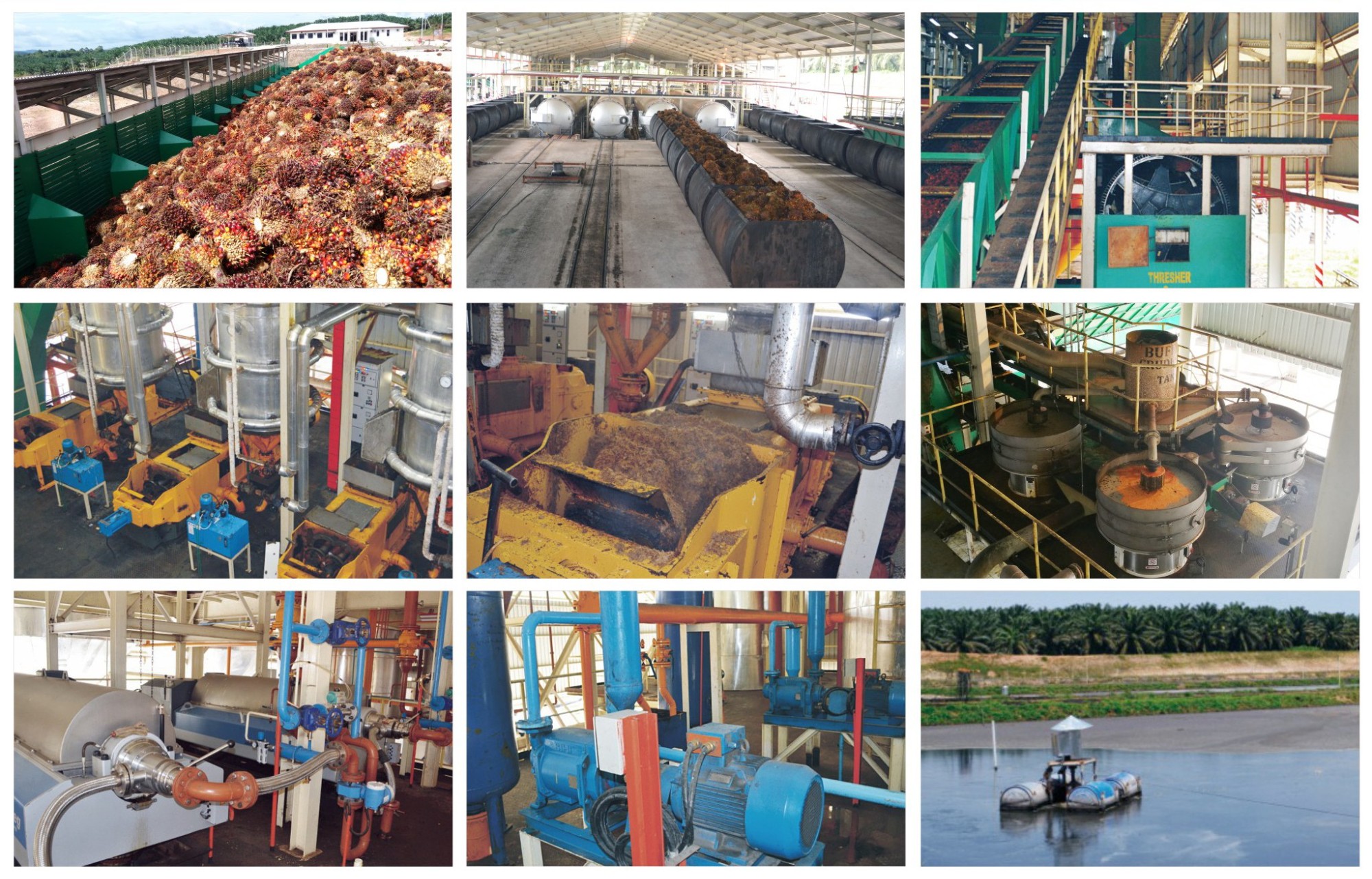
Palm oil is a tropical woody vegetable oil. It is currently the world’s largest variety of vegetable oil in terms of production, consumption and international trade. It is also known as the “three major vegetable oils in the world” together with soybean oil and rapeseed oil. It has more than five thousand years of history. Edible history.
Palm oil pressing process:
Palm fruit receiving → sterilization → threshing → crushing → pressing → filtering → crude palm oil
1. Sterilization
The fresh palm fruit bunches received from the orchard must first be transported to the sterilization equipment for high-temperature cooking for about 60 minutes. The main purpose of sterilization is to destroy the lipase in the pulp, so as to prevent the free fatty acid content in the oil from increasing. In addition, the high-temperature sterilization can make the fruit soft and facilitate mechanical de-fruiting. It should be noted that the fresh palm fruit bunches should be processed within 24-48 hours to prevent rancidity of the pulp from affecting the oil.
2. Dessert
Fruit threshing refers to the use of a threshing machine to separate the palm fruit from the fruit bunch. The common fruit threshing machine has two kinds of simple threshing machine and rotary drum threshing machine. If the processing volume of palm fruit is relatively small. Or if the budget is limited, you can also choose to remove the fruit manually.
3. Mash
Mashing refers to the use of mashing equipment to mash the palm fruit into a paste. The mashing process can destroy the cell structure of palm fruit to improve the efficiency of palm oil squeezing.
4. Squeeze
Squeezing refers to the use of a palm oil press to obtain palm oil from palm fruit. As a manufacturer of palm oil production equipment, Henan ZTE can provide you with single-screw palm oil presses and double-screw palm oil presses. You can choose palm oil press according to your own output and needs. Crude palm oil obtained after pressing contains impurities and needs to be filtered by filtering equipment. Common filtering equipment includes sedimentation tanks, rotary vibrating screens and plate and frame filters. After filtration, clarified crude palm oil can be obtained.
5. Filter
Crude palm oil can be pumped into crude oil tanks for storage after being vacuum dried. This crude palm oil can be consumed directly in some regions, especially in some African countries. Of course, crude palm oil can also be refined and fractionated, so that the obtained palm oil has a high market value.
Palm oil refining:
Palm oil refining process: crude palm oil → degumming → deacidification → decolorization → deodorization → refined palm oil
The purpose of palm oil refining is to remove various impurities in crude palm oil. The refining process mainly includes four steps: degumming, deacidification, decolorization and deodorization. After deodorization, the impurities in the crude palm oil are removed, and refined palm oil can be obtained.
If the acid value of crude palm oil is relatively high and the output is relatively large, Henan Zhongxing recommends physical refining, which can reduce crude oil loss. If the acid value is below 5% and the refining capacity is about 1-10 tons per day, intermittent chemical refining can be considered, so the refining effect is better.
Separate extraction of palm oil:
Refined palm oil will precipitate crystals at low temperatures. Therefore, for the stability of oil storage or to achieve different uses, you can choose to separate it.
Palm oil fractionation process:
refining palm oil → heating section → crystallization section → filtration section → palm soft fat + palm stearin.
After palm oil fractionation, soft fat (liquid palm oil) and stearin (solid palm oil) can be obtained. Among them, soft butter can be sold in the market, and hard butter can be used as a raw material to replace cocoa butter and margarine.
Professional Advice
If you need our products please write down any questions, we will reply as soon as possible.
Copyright © Henan Zhongxing Grain And Oil Machinery Co.,Ltd. All Rights Reserved. Powered by MetInfo